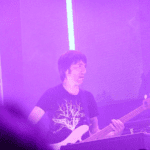In a curious twist of events in the world of cinematic technology, Disney now finds itself on the receiving end of a lawsuit against its usage of the likeness of Peter Cushing in Rogue One: A Star Wars Story. The issue in contention here is the decision to digitally recreate his character, Grand Moff Tarkin, through CGI without any prior permission from those entrusted with the rights to his image.
For most viewers, the digitally reanimated appearance of Grand Moff Tarkin was a jolting reminder of the so-called “uncanny valley”-that uneasy feeling one gets from observing a digital approximation of a real human that’s almost, but not quite, right. This version of Cushing-the star of numerous classic horror movies and Star Wars-was meant to resurrect a welcome sight. It failed miserably and did little else but upset a lot of viewers and, if this court case is anything to go by, generated a bit more than critical response.
As reported recently in The Times, Kevin Francis, a close friend of the late actor, is suing Lucasfilm. Francis claims it was the condition of Peter Cushing’s consent that his image not be used without specific consent. The case has been the source of some disagreement, as Disney moved to dismiss the suit for “unjust enrichment.” The High Court in London has disagreed, ruling that the case will go forward.

Peter Cushing was an actor who died in 1994 at age 81 and had made nearly 600 films, both for theater and radio. He is perhaps best remembered in Britain for his classic performances in various horror films opposite Christopher Lee, including The Satanic Rites of Dracula and The House That Dripped Blood. To fans of the Star Wars franchise, Cushing’s Grand Moff Tarkin is as identifiable as Lee’s Count Dooku.
The decision was made in Rogue One to digitally resurrect Grand Moff Tarkin via the latest CGI technology. This was supposed to be the crowning pleasure-to bring back to the screen one of the most beloved characters. However, during the execution, this resulted in mixed reactions since the digital recreation of the said character turned out more unsettling rather than nostalgic. This technology, common to a number of films starting in the 2010s, falls squarely into the uncanny valley-that is, that the appearance of a CGI character is almost but not quite lifelike, which can be unsettling in its own right.
The suit puts into sharp focus the energetic debates currently being waged over the moral and legal status of digital likenesses and intellectual property in contemporary filmmaking. This legal battle has brought up a basic question about the rights included in an actor’s image and those studios bear when bringing back characters of the past with advanced technology.


